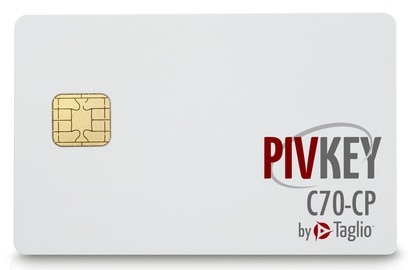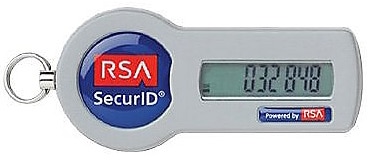Public-Key Infrastructure (PKI)
Junghoo Cho
cho@cs.ucla.edu
Four Security Guarantees
-
Internet is an open and public forum where everyone talks to everyone else
- Data packets can be intercepted and seen by anyone
- No guarantee on the origin and integrity of data packet
-
Q: Given this, what guarantees may we desire before we conduct important transactions over the Internet?
- Confidentiality
- Message/data integrity
- Authentication
- Authorization
Confidentiality
-
Q: How can we keep confidentiality of the messages?
-
Steganography: “embed” true message within harmless-looking message
- Kathy is laughing loudly
- Change the lowest bit of image pixels
- “Security by obscurity”
-
Encryption: “scramble” message with a secret key, so that it wouldn’t make sense to others unless they have the key
- Example: bitwise XOR with k
- 11110000 (message) XOR 10111001 (key) → 01001001 (ciphertext)
- 01001001 (ciphertext) XOR 10111001 (key) → 11110000 (message)
-
Symmetric-Key Cipher
- F(m,k): encryption function, e.g., F(m,k)=m XOR k
- m: plaintext (= message), k: secret key
- c: ciphertext. transmitted over insecure channel
- F′(c,k): decryption function, e.g., F′(c,k)=c XOR k
- Inverse of F: F′⋅F=I
- The pair [F(m,k),F′(c,k)] is called a cipher
Security of Cipher
- Q: What property should F(m,k) have?
- A: Ideally, one should never be able to guess m from c alone
- Ciphertext should not reveal any information about plaintext
- Perfect secrecy (= Shannon secrecy)
- For all plaintext x and ciphertext y, Pr(x∣y)=Pr(x)
- OTP (one time pad) encryption is proven to be perfectly secret, but due to practical limitation, cannot be used directly
- Many encryption algorithms try to “mimic” OTP, e.g., RC4
Popular Ciphers
- AES (advanced encryption standard)
- 128 bit block cipher
- 128, 192, 256 bit keys
- Adopted by NIST (national institute of standard and technology) as a replacement of DES in 2000
- IDEA, A5 (used by GSM), …
Challenges
- Q: Can A use the same key for communicating with B and C?
- Q: If there are n parties, how many keys are needed?
- Q: How can two parties agree on a key “secretly” over the Internet in the first place?
Key Agreement Problem
- Q: Can two parties send and receive encrypted messages without agreeing on a shared secret key?
- A: Asymmetric-key cipher
Asymmetric-Key Cipher
- Two pairs of keys, not one!
- e: encryption key
- d: decryption key
- Q: How does this help?
Asymmetric-Key Cipher
- Everyone has their own (e,d) key pair
- Everyone shares their e with anyone: public key
- Other users use the public key to encrypt a message to the user
- Users keep their d secret: private key
- Users use their private key to decrypt message
- No need to send the private key over insecure channel
- Private key NEVER leaves the owner of the key
Asymmetric-Key Cipher
- Idea first developed by Ellis, Cocks, and Williams (working for British NSA)
- In early 70’s, but could not publish
- First public-key cryptosystem by Diffie and Hellman in 1976
- RSA (Rivest, Shamir and Adleman)
- Most widely used asymmetric-key cipher
- Used by many security protocols: SSL, PGP, CDPD, …
RSA: Key Generation
- Pick two random prime numbers p and q.
- Pick e<(p−1)(q−1)
- e does not have to be random
- Popular choice: e=65537(=216+1),3,5,35,...
- Find d<(p−1)(q−1) such that de mod (p−1)(q−1)=1
- Using extended-euclid algorithm
- (e, n) becomes public key, (d, n) becomes private key where n=pq
- Throw away p and q
RSA Cipher
-
Encryption and Decryption functions
-
F(m,(e,n))=me mod n
-
F′(c,(d,n))=cd mod n
-
-
Q: Does this work?
RSA: Two Important Theorems
- Q: Given a choice of e, can we always find d such that de mod (p−1)(q−1)=1?
- A: Yes, there exists unique d if e is a coprime to (p−1)(q−1)
- i.e., e does not share any factor with (p−1)(q−1)
- Q: Is F′(c,(d,n)) the inverse of F(m,(e,n))?
- A: Yes, m=[(me mod n)d mod n] for such e, d and n=pq
- RSA works!
- But most asymmetric-key ciphers are 1000x slower than any symmetric-key cipher
- Q: Is it secure? What should we make sure for the security of RSA?
Security of Asymmetric-Key Cipher
- Q: What properties should F, F′, e, and d satisfy to make this secure?
- A: One should never guess m from c without d (~ perfect secrecy)
- A: One should never guess d from e
Security of RSA (1)
- Q: Can a hacker “break RSA”?
- Q: What does the hacker know? m? c? (e,n)? (d,n)?
- Q: What other relationship does the hacker know?
- A: de mod (p−1)(q−1)=1,n=pq,c=me mod n
Security of RSA (2)
de mod (p−1)(q−1)=1,n=pq,c=me mod n
- Q: Can the hacker get m by solving c=me mod n?
- A: RSA problem. No efficient solution known.
- Q: Can the hacker get d by solving de mod (p−1)(q−1)=1?
- Q: Can the hacker get p and q from n=pq?
- A: Large-number factorization problem. No efficient solution known.
Security of RSA (3)
- Security of RSA depends on the difficulty of two key problems
- RSA problem: solve c=me mod n for m
- Large-number factorization problem: factorize n=pq for large n, primes p,q
Application of Asymmetric-Key Cipher
- Q: How can we use an asymmetric-key cipher to keep message “confidential”?
- A:
- Use asymmetric-key cipher to establish a shared key
- Using the shared key, use symmetric-key cipher to encrypt message
- Performance and complexity issue
- Q: How can we “authenticate” the other party?
- A: Challenge-Response
- Challenge: generate random value r and send c=F(r,e)
- Response: send back F′(c,d)=r
- Only the one with d can send back r
Application of Asymmetric-Key Cipher
- Q: How can we check the message integrity? How can we make sure others did not temper with message?
- A: Signature
- Main idea: I=F′⋅F=F⋅F′. That is, F(F′(m,d),e)=m!
- In RSA, for example, m=(me mod n)d mod n=(md mod n)e mod n
- “Private-key decrypted” checksum of message body
- Given a message with signature, “encrypt” the signature using the public key of the author
- Correct signature should have correct checksum
- Main idea: I=F′⋅F=F⋅F′. That is, F(F′(m,d),e)=m!
Public-Key Infrastructure
- Q: How do we know the public key for A really belongs to A?
- Q: In real world, how do we verify the identity of a person?
- Q: Why do we trust it?
- A: Public-Key Infrastructure (PKI)
- Certificate Authority (CA)
- Trusted entity that can issue trusted certificates to Web sites
- Performs out-of-band identity verification before issuing a certificate
- Certificate
- Text (XXXX is the public key of A) signed by CA’s secret key
- Others can “trust” the public key if they trust CA
- Certificate Authority (CA)
HTTPS: High-Level Description
- When contacted by client, server presents its signed certificate
- “XXX is the public key of amazon.com. This certificate is valid until …”
- Client “authenticates” server through challenge/response using the public key
- Client/server agrees on a symmetric-key through a secure channel established through asymmetric-key cipher
- Client/server communicate securely through symmetric-key cipher
Multi-Factor Authentication
- Q: What if the user loses their secret password?
- Multi-factor authentication
- To minimize possibility of compromised keys, systems authenticate users based on combinations of
- What you have (e.g., physical key, id card)
- What you know (e.g., password)
- Who you are (e.g., fingerprint)
- 2-factor authentication
- To minimize possibility of compromised keys, systems authenticate users based on combinations of
Popular Second Factor
- Smartphone
- Send an SMS/push notification on a registered device
- USB key
- e.g., FIDO U2F Security Key

- e.g., FIDO U2F Security Key
- SmartCard
- Temper-resistant security card

- Temper-resistant security card
Popular Second Factor
- OTP (one time password) key
- A physical card flashing a new security code, say, every minute
- e.g. SecurID by RSA security
- User provides the security code to log in

- A physical card flashing a new security code, say, every minute
What We Learned
- Four security guarantees
- Confidentiality, integrity, authentication, authorization
- Symmetric-key cipher: AES algorithm
- Asymmetric-key cipher: RSA algorithm
- Public-Key Infrastructure (PKI)
- Certificate Authority (CA), certificate
- HTTPS
- Multi-factor authentication